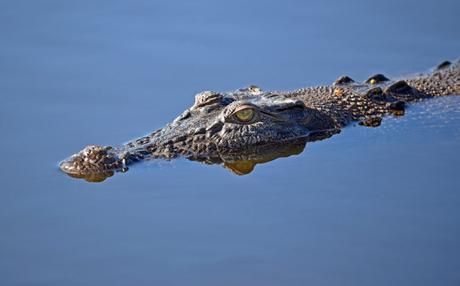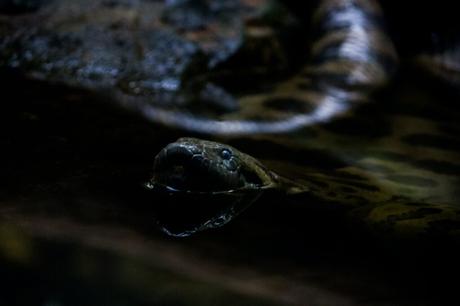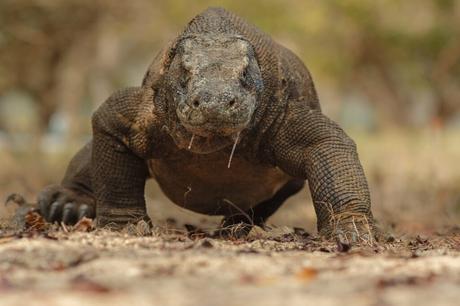
The saltwater crocodile, also known as the estuarine crocodile, is the largest living reptile in the world. Found in the waters of Southeast Asia and northern Australia, these massive predators can grow up to 23 feet long and weigh over a ton.
Their strong jaws can apply more than 3,000 pounds of pressure per square inch, making them one of the most dangerous animals.. Despite their size and strength, saltwater crocodiles are also incredibly agile and can move quickly on land and in water.
Saltwater crocodiles are known not only for their physical abilities, but also for their intelligence and ability to change. They are able to learn and remember complex tasks, such as hunting strategies and the locations of prey. These traits have allowed them to thrive in their environments, even in the face of human encroachment and habitat loss.
But their large size and aggressive nature have made them a target for hunting and poaching, which has led to a decline in their numbers. As we continue to learn more about these amazing reptiles, it is important that we also work to protect them and their homes for future generations.
Green Anaconda

Green anacondas are another species of reptile that commands respect and awe. They are the largest livng species of snake in the world, with the ability to grow up to 30 feet long and weigh over 500 pounds. Their muscled bodies are covered with dark green scales that help them hide in their natural habitats of swamps and marshes.
Even though they are very big, green anacondas are not usually aggressive toward people. They usually only attack when provoked or threatened. However, their powerful coils and ability to constrict prey make them formidable predators in the wild. Like saltwater crocodiles, green anacondas are also apex predators in their ecosystem.
Their diet consists of a variety of prey, including fish, birds, mammals, and even other reptiles. Adult green anacondas have few natural enemies because they are so big and strong. Only jaguars and caimans are known to eat them.
Even though green anacondas are very strong, their habitats are being destroyed, and they are being hunted. Their skins are highly valued in the leather industry, and they are also hunted for their meat and oil.
As with saltwater crocodiles, it's important to protect green anacondas and their homes to make sure they don't go extinct and keep the ecosystem healthy. This can be done by working to protect them, making hunting rules stricter, and teaching people how important it is to keep these beautiful animals alive.
Komodo Dragon

The Komodo dragon is another impressive predator that is on the same level as the saltwater crocodile and the green anaconda.
Found only on a few Indonesian islands, these reptiles are the largest lizards in the world, growing up to 10 feet in length and weighing up to 200 pounds. Despite their size, they are agile and fast, able to run at speeds of up to 12 miles per hour.
Their diet consists mainly of deer, wild boar, and water buffalo, which they ambush and kill with their sharp teeth and powerful jaws. But, like saltwater crocodiles, they will eat almost anything they can catch, like fish, birds, and even smaller crocodiles.
Leatherback Sea Turtle
Another magnificent creature that needs to be preserved is the leatherback sea turtle. These turtles are the largest of all living turtles, with some individuals weighing up to 2,000 pounds. They are also one of the most migratory, traveling thousands of miles each year to breed and feed.
However, because of the destruction of their habitat, the harm caused by pollution, and the accidental capture in fishing nets, their numbers have significantly decreased. It's crucial to safeguard these incredible animals' nesting beaches, reduce ocean plastic pollution, and make sure they don't unintentionally entangle themselves in fishing gear in order to prevent their extinction.
Scientists are also studying the biology and behavior of the leatherback sea turtle to learn more about what they need and how to protect them. For example, researchers have found that these turtles have a unique heat exchange system that lets them keep their body temperature even in cold water. They have used this information to make more effective conservation strategies.
With more research and conservation efforts, we can hopefully make sure that people in the future will be able to see these huge turtles swimming in our oceans.
Difference Between The Largest Living Reptiles
Even though many of the biggest reptiles have things in common, like having scaly skin and being cold-blooded, they are also very different in many ways. For example, crocodiles have a unique shape to their snouts and strong jaws, and anacondas are famous for their length and their ability to squeeze their prey.
Also, some reptiles have special features that help them do well in certain environments. For example, the marine iguana can dive deep underwater to find food. By knowing these differences, we can better appreciate how different and complicated these amazing creatures are.
Another factor that sets these reptiles apart is their behavior. Some animals, like the Komodo dragon, hunt by themselves, while others, like the saltwater crocodile, are social and live in groups.
Some reptiles, like the Galapagos tortoise, live slowly and steadily, while others, like the green anaconda, move very quickly and are very flexible. By looking at how these animals act, we can learn more about how they live and do well in their own environments.
The World's Largest Living Reptiles Habitats
The world's biggest reptiles live in places as different as the tropical rainforests of South America and the dry deserts of Australia. For example, you can find saltwater crocodiles in the salty water of mangrove swamps, estuaries, and coastal lagoons in Southeast Asia and Northern Australia.. The green anaconda, on the other hand, is primarily found in the swamps and marshes of the Amazon Basin.
The Nile crocodile and the black caiman are two other large reptiles that live in freshwater rivers and lakes in Africa and South America, respectively. Some, like the Komodo dragon, are only found on certain islands. Others, like the reticulated python, can be found all over Southeast Asia. The habitats of these reptiles are often closely tied to their diet and hunting behavior, as well as their need for warmth and shelter.
If we know where these reptiles live, we can also learn more about the environmental factors that have shaped their evolution.
Threats To The Largest Living Reptiles Habitat and Population
Climate change is also becoming more of a worry for these species, as rising temperatures and changing weather patterns can have a big effect on their ability to live and reproduce. Also, pollution and other things that hurt the environment can hurt the health of many large reptiles and make it harder for them to find food. To protect these iconic animals and make sure they stay alive in the wild, conservation efforts are essential.
This could mean taking steps like restoring habitats, setting up programs to breed animals in captivity, and making hunting and trade more difficult. Also, studying these reptiles can teach us important things about the larger ecological systems in which they live.
For example, the presence of certain species can show how healthy an ecosystem is, while changes in their behavior or where they live can show how the environment is changing in a bigger way. In this way, large reptiles are not only interesting animals in their own right, but also important signs of how healthy and strong the natural systems of our planet are.
As such, it is vital that we continue to study and protect these magnificent animals for generations to come.
Largest Living Reptiles behavior, physiology, and ecosystem roles
This research can help us come up with better ways to protect nature and learn more about how complex interactions shape our natural world.
Recent studies have looked at how climate change affects large reptiles, which may be especially vulnerable to rising temperatures and changing patterns of rainfall.
Other research has looked at how these animals fit into the ecosystem as keystone species, whose presence or absence can have a big effect on the whole system.
We can work toward a more sustainable and peaceful relationship with the natural world by building on these findings and continuing to study the many mysteries of these fascinating creatures.
